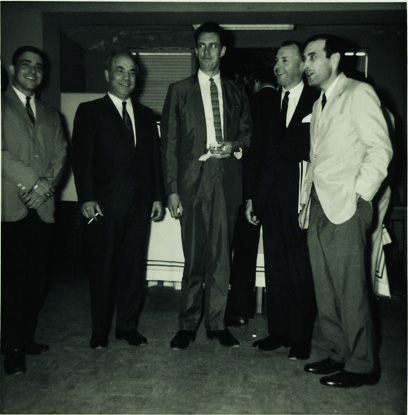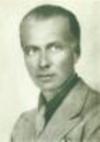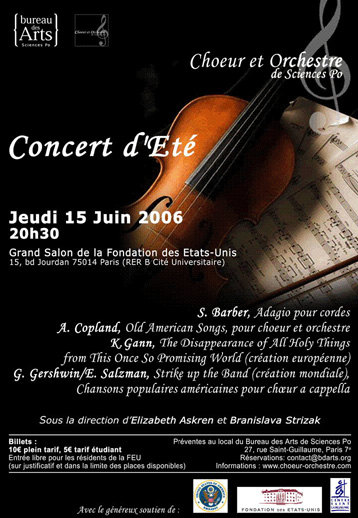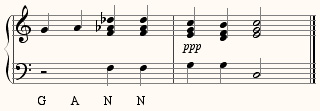A friend sent me this old 1960s photo of five composers. If you can identify half of them, you’re more of a 20th-century music wiz than I am:

Give up? Recognize any of them?
They are, from left to right, William Duckworth, Paul Creston, Sydney Hodkinson, Iain Hamilton, and Martin Mailman. Duckworth is the close friend who had the photo. Creston’s music I’ve never gotten excited about, but I’ve always been curious because he was one of the few composers, along with Schoenberg, Ives, and Ruggles, that Henry Cowell championed with lengthy analytical articles. Mailman was Duckworth’s composition teacher, and later the local composing celebrity around Dallas, where I grew up, as long-time composition professor at North Texas State U. I remember in high school my composition teacher, the band director Howard Dunn, bringing in Mailman with great reverence, as the star composer of north Texas. The only incident I remember is that Mailman chewed out a fellow student of mine for beginning Beethoven’s “Waldstein” Sonata on the piano and playing it softly, when the dynamic marking, Mailman assured us, was ff.
Of course, the actual dynamic marking is pp. Little surprise that Mailman, who died in 2000, is forgotten today except in the symphonic band arena, but he was someone who, as Southern composers, Bill and I got to experience in common. The student who earned his disdain by playing Beethoven at the correct dynamic was Robert Hunt, still a friend and a superb musician, and, last I heard, conductor of the Midland-Odessa Symphony Orchestra in west Texas.


 I was once told, on the good authority of someone who played his music, that there were no extant photographs of the reclusive Italian composer Giacinto Scelsi – he didn’t like having his picture taken. I printed this factoid in the Village Voice, and in response someone sent me an indistinct photo of an old man in a wool cap, which the sender claimed was the only known photo of Giacinto Scelsi. Now, courtesy of Chicago critic
I was once told, on the good authority of someone who played his music, that there were no extant photographs of the reclusive Italian composer Giacinto Scelsi – he didn’t like having his picture taken. I printed this factoid in the Village Voice, and in response someone sent me an indistinct photo of an old man in a wool cap, which the sender claimed was the only known photo of Giacinto Scelsi. Now, courtesy of Chicago critic 
